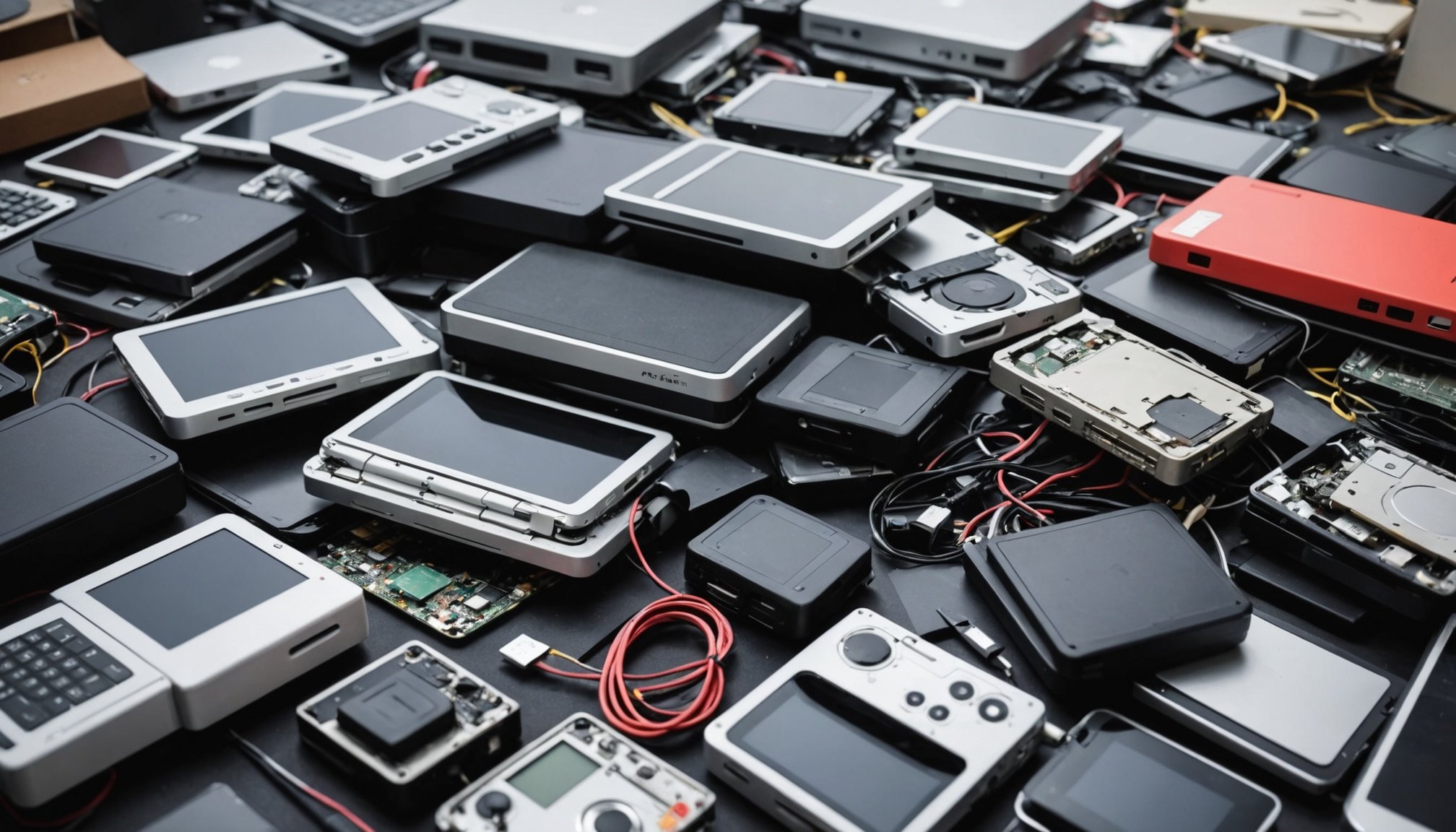Understanding E-Waste and Its Environmental Impact
E-waste, or electronic waste, encompasses discarded electronic or electrical devices. This includes a variety of everyday items such as smartphones, computers, televisions, and even kitchen appliances like toasters. As technology progresses, the lifespan of electronic products shortens, increasing the volume of e-waste generated worldwide.
Improper disposal of these items poses significant environmental impact. Many electronic devices contain harmful substances like lead, mercury, and cadmium, which can leach into the soil and groundwater if they end up in landfills. This contamination not only affects wildlife but can also enter the human food chain. Moreover, improper disposal contributes to the release of greenhouse gases, exacerbating climate change.
A voir aussi : Discover the Ultimate Strategy for Efficient Box Labeling During Your UK Relocation
Recycling e-waste responsibly is crucial for sustainability. Through recycling, valuable materials such as metals and plastics are reclaimed and reused, reducing the need for new raw materials. This process not only conserves natural resources but also saves energy and decreases pollution from manufacturing processes. For individuals, making informed decisions about e-waste disposal, choosing certified e-waste recyclers, and advocating for effective recycling systems can mitigate the environmental impact significantly, promoting a more sustainable future.
Sustainable Disposal Options
Finding ways to dispose of old electronics sustainably is crucial in today’s world. Fortunately, there are several eco-friendly disposal choices available.
En parallèle : How to handle utilities transfer when moving to a new house in the UK?
Recycling Programs
In the UK, comprehensive electronic recycling programs exist to help ensure that gadgets do not end up in landfills. These initiatives aim to recover valuable components and safely dispose of hazardous materials. Many local councils offer designated collection points for e-waste. It’s vital to check with your local authority to find the nearest drop-off location.
Donation Services
If your electronics are still functional, donation services provide a commendable alternative. Charitable organizations and non-profits often accept unwanted devices for refurbishing and redistribution. Before donating, ensure the device is in good working order and wiped of personal data. It’s a simple yet impactful way to contribute to community support programs and reduce waste.
Manufacturer Take-Back Programs
Several electronics manufacturers offer take-back programs tailored for consumers wanting to dispose of devices sustainably. These programs sometimes provide incentives like discounts on new products. Companies such as Dell, HP, and Apple have robust plans allowing customers to return old technology for responsible recycling or repurposing. Always review the conditions of these programs to maximize their benefits.
Step-by-Step Guide to Disposal
Disposing of electronics responsibly is crucial. Begin with preparation for recycling by ensuring your devices undergo thorough data wiping. This protective measure secures sensitive information by erasing all data before moving forward with other steps. Deconstruction involves separating materials like plastics and metals, facilitating their treatment at recycling facilities.
Most cities provide designated e-waste collection points for recycling. Locating these requires minimal effort. Start by contacting local waste management services or checking municipal websites for detailed information. Often, retail locations offer drop-off points for small electronics.
Before relocating, a careful checklist of items underlines what not to forget. Consider deleting personal accounts from older devices and gathering all the necessary accessories—like chargers—to prevent hassle during moving. Moreover, packing such items securely with appropriate cushioning ensures protection during transit.
Lastly, initiate the search for e-waste centres well in advance of your move. Incorporating moving tips, such as labeling boxes with their contents, simplifies the process—focusing on organization helps prevent last-minute rushing. Remembering these simple yet effective tips can transform an otherwise overwhelming task into a seamless experience.
Government Regulations and Support
The UK e-waste regulations play a significant role in managing electronic waste responsibly. Here’s a dive into how these regulations and local government initiatives can assist you in the legal disposal of e-waste.
Overview of E-Waste Legislation in the UK
In the UK, the Waste Electrical and Electronic Equipment (WEEE) Directive enforces strict guidelines for the disposal of electronic waste. The directive mandates producers and importers of electrical goods to finance the collection, treatment, and recycling of e-waste. This means that consumers have channels available for disposing of electronics without additional cost. Compliance with these laws ensures minimal environmental impact and promotes sustainable disposal practices.
Local Government Initiatives
Local governments in the UK have established numerous resources to facilitate legal disposal for residents. For instance, many councils offer designated drop-off points for e-waste or scheduled collection services. These initiatives help residents easily dispose of items like old mobile phones, computers, and household appliances without hassle. By utilising these services, not only do residents comply with UK e-waste regulations, but they also contribute to environmental sustainability. Engaging with these local government resources ensures that e-waste is handled correctly, and materials are recycled efficiently.
Additional Resources and Information
When dealing with e-waste, leveraging various resources can enhance your understanding and facilitate proper management. Informative websites such as Earth911 and E-Stewards offer comprehensive insights into eco-friendly disposal practices and e-waste resources.
Community programs play a pivotal role in encouraging responsible e-waste management. Local initiatives often provide residents with opportunities to recycle electronics safely. Participation not only aids the environment but also fosters a community committed to sustainable practices. Examples might include neighbourhood drop-off events or partnerships with schools to educate students.
It’s crucial to stay informed about evolving disposal methods and expanding resources. Keeping abreast of new guidelines ensures that your e-waste handling aligns with the latest environmental standards. Many organizations offer subscriptions to newsletters, thus keeping you updated without a hitch.
In summary, leveraging websites and community resources optimises your approach to e-waste management. Not only do they provide valuable information, but they also engage the community in educational opportunities, fostering a collective commitment to responsible practices.











